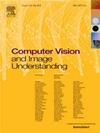多方对话中人类感知机器人的多模态可解释性方法
IF 3.5
3区 计算机科学
Q2 COMPUTER SCIENCE, ARTIFICIAL INTELLIGENCE
引用次数: 0
摘要
收件人估计(了解某人正在与谁交谈)是多方对话场景中人类活动识别的一项基本任务。具体来说,在人机交互领域,使社交机器人能够参与到这样的交互环境中变得更加重要。然而,它通常被实现为一个二元分类任务,限制了机器人估计它是否被处理的能力,这限制了它的交互技能。对于一个社交机器人来说,要获得人类的信任,表现出一定程度的透明度和可解释性也很重要。因此,可解释的人工智能在当前的机器学习应用和模型中发挥着重要作用,除了出色的性能外,还为它们的决策提供解释。在我们的工作中,我们(a)提出了一个与以前最先进的技术相比性能更好的收件人估计模型;(b)进一步修改该模型,以包括内在可解释的基于注意力的细分;(c)在iCub机器人中实现可解释的收件人估计,作为多方对话的模块化认知架构的一部分;(d)验证可解释模型在多人人机交互中的实时性;(e)提出若干方法,将可解释性和透明度纳入上述架构;(f)进行在线用户研究,分析各种解释对人类参与者如何感知机器人的影响。本文章由计算机程序翻译,如有差异,请以英文原文为准。
A multi-modal explainability approach for human-aware robots in multi-party conversation
The addressee estimation (understanding to whom somebody is talking) is a fundamental task for human activity recognition in multi-party conversation scenarios. Specifically, in the field of human–robot interaction, it becomes even more crucial to enable social robots to participate in such interactive contexts. However, it is usually implemented as a binary classification task, restricting the robot’s capability to estimate whether it was addressed or not, which limits its interactive skills. For a social robot to gain the trust of humans, it is also important to manifest a certain level of transparency and explainability. Explainable artificial intelligence thus plays a significant role in the current machine learning applications and models, to provide explanations for their decisions besides excellent performance. In our work, we (a) present an addressee estimation model with improved performance in comparison with the previous state-of-the-art; (b) further modify this model to include inherently explainable attention-based segments; (c) implement the explainable addressee estimation as part of a modular cognitive architecture for multi-party conversation in an iCub robot; (d) validate the real-time performance of the explainable model in multi-party human–robot interaction; (e) propose several ways to incorporate explainability and transparency in the aforementioned architecture; and (f) perform an online user study to analyze the effect of various explanations on how human participants perceive the robot.
求助全文
通过发布文献求助,成功后即可免费获取论文全文。
去求助
来源期刊

Computer Vision and Image Understanding
工程技术-工程:电子与电气
CiteScore
7.80
自引率
4.40%
发文量
112
审稿时长
79 days
期刊介绍:
The central focus of this journal is the computer analysis of pictorial information. Computer Vision and Image Understanding publishes papers covering all aspects of image analysis from the low-level, iconic processes of early vision to the high-level, symbolic processes of recognition and interpretation. A wide range of topics in the image understanding area is covered, including papers offering insights that differ from predominant views.
Research Areas Include:
• Theory
• Early vision
• Data structures and representations
• Shape
• Range
• Motion
• Matching and recognition
• Architecture and languages
• Vision systems
 求助内容:
求助内容: 应助结果提醒方式:
应助结果提醒方式:


